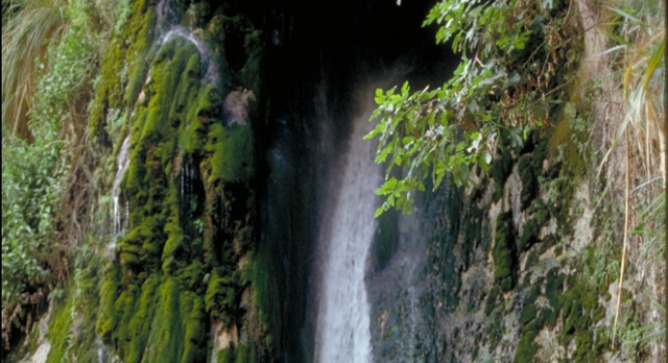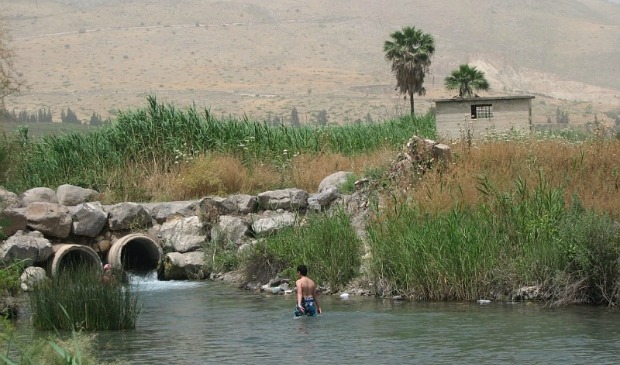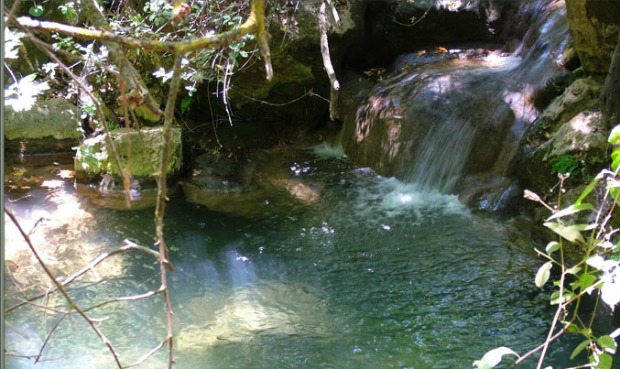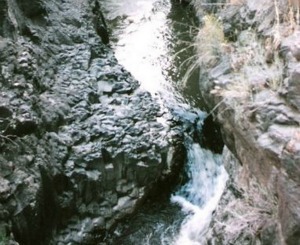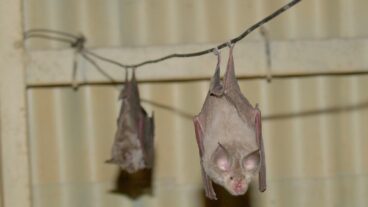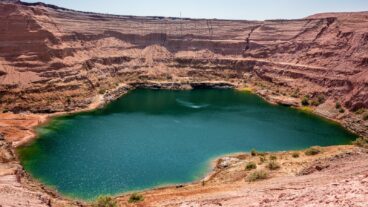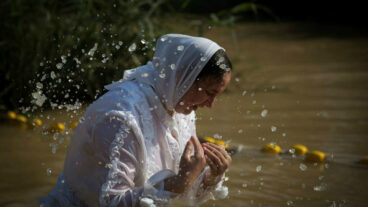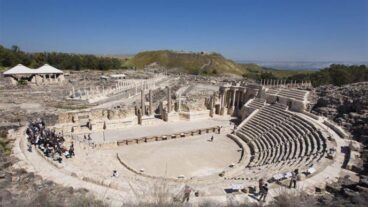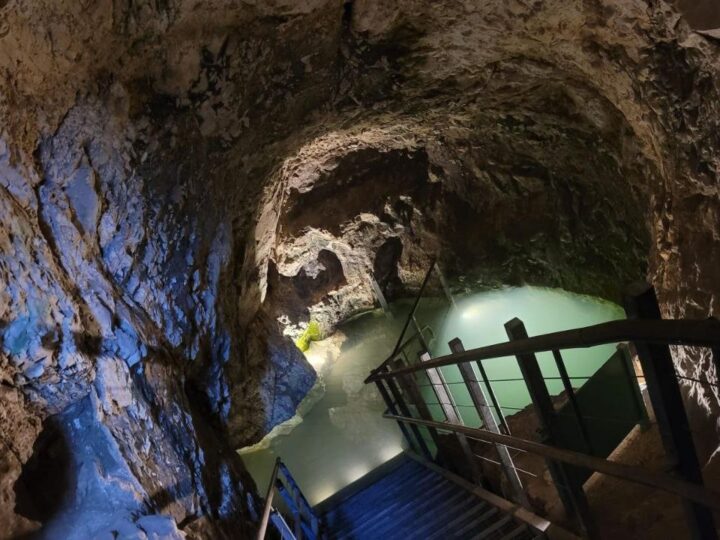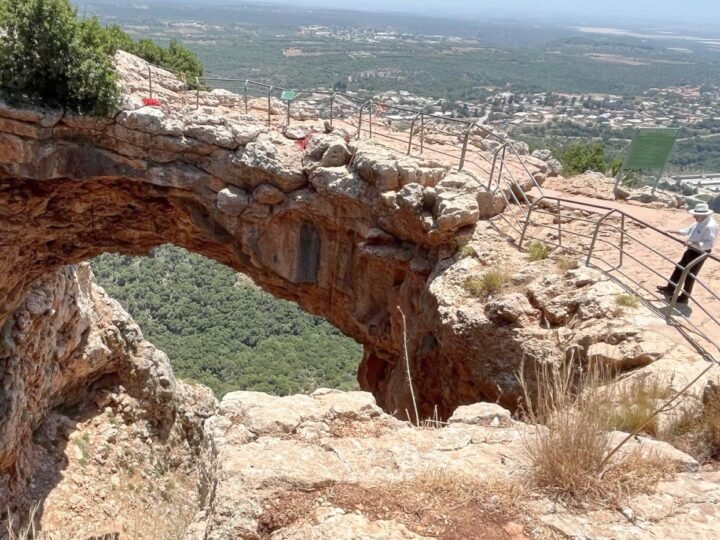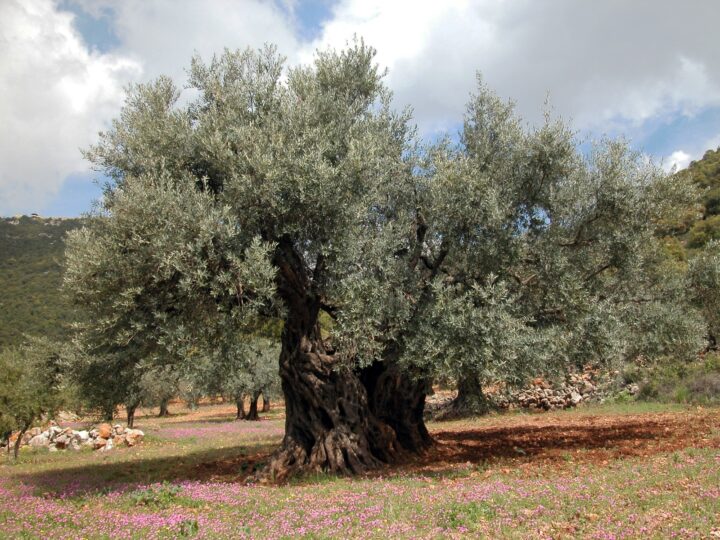Israel has two main seasons: hiking season and stay-at-home season. It’s not hard to figure out the reason for the latter, which runs from May through September: it’s hot. Blistering temperatures drive even the hardiest Sabras to pack away their hiking boots until after Yom Kippur in the fall.
But there is a way to survive the summer and still venture outside. Despite years of drought, there’s no shortage of great water hikes in this tiny country. Here’s ISRAEL21c’s list of the top 10 water hikes in Israel.
Judean Desert and Dead Sea area
1. The Darga
Also known as “Nahal Dragot” in Hebrew, the Darga is a “must do” adventure hike, and by adventure, we mean it. Located in the northern part of the Dead Sea, this tiyul is for experienced trekkers only, requiring rope in several locations to descend sheer cliffs sometimes 50 meters in height. The payoff, though, is the many pools into which you either slide or jump. By the end of the summer, the pools start to dry up and what’s left gets more than a bit stagnant, but after the winter rains the pools will be topped off ready for another summer.
2. Wadi Kelt
Wadi Kelt is one of the most popular hiking spots in Israel, drawing some 60,000 visitors a year. From the starting point near Kfar Adumim (off the Jerusalem-Dead Sea highway), you can turn west where there is a series of large pools clumped together, or east for a hike through a canyon with the pools more evenly spaced, each beckoning for a dip in the summer heat. Some of the pools are deep enough for swimming. One has little fish that harmlessly nibble on your toes. With plentiful swim stops and a picnic lunch, count on four to five hours.
3. Ein Gedi
The Ein Gedi Nature Reserve boasts two waterfalls. Easy access to the better known of the two is via Nahal David. It used to be that you could actually go swimming in the pool surrounding the waterfall, but the authorities have since roped it off. Nahal Arugot is the less well-traveled canyon. The terrain is trickier but the waterfall is just as nice, and you can go in. For both routes, you can also hike above the waterfalls and look down for a spectacular view.
Jordan Valley
4. Nahal HaKibbutzim
This water hike outside of Beit She’an, at the northern tip of the Jordan Valley, is perfect for families – the water won’t get higher than an adult’s chest and, at two hours, it’s not too long. Plus you’ll be in the water the entire time. The kids will love the water pipes that serve as slides. At the end of the hike there is a large concrete-walled swimming pool that was built for officers during British Mandate. Dry off here before heading back to your car.
Galilee
5. Nahal Amud
Intrepid Israelis seeking a challenge often embark on a three-day “Sea to Sea” hike from the Mediterranean to the Sea of Galilee (or vice versa). But if you only have a few hours, head to what’s probably the prettiest section of the trip – Nahal Amud. Located a few minutes from the kabalistic city of Safed (Tzfat), Nahal Amud can be accessed either by traipsing through Safed’s cemetery or by parking in the lot on the road to Meron. The trail runs along the Amud Stream where you can go for a dip at various spots. Depending on how far you go, the hike could last anywhere from two to five hours.
Golan Heights
6. Nahal Yehudia
There are water hikes where swimming is optional and others where the water is so deep, you have to wrap your backpack and camera in waterproof plastic, bring a makeshift inflatable boat and sail your stuff to the other side. Nahal Yehudia fits the latter category. In what’s known as “upper” Nahal Yehudia, there are two cliffs to climb down using rungs and ladders drilled into the side of the rock. There are several large pools, but the highlight of the trek is the 29-foot high Yehudia Falls. Though Yehudia was temporarily closed last March after a rock avalanche, we’re including it in our list because the hike is just too good to be shut off forever. Put it on your water hike “bucket list.”
7. The Zaki
If you thought the Yehudia was challenging, you ain’t seen nothing yet. The Zaki (“clear water” in Arabic) involves hiking in water, together with swimming in some very deep lagoons (some as much as 82 feet, others wading level) for more than two hours. The Zaki is one of five streams in the Beit Tzaida Valley, just north of the Sea of Galilee. This water hike requires sturdy shoes because the riverbed is full of small stones and pebbles, making it easy to lose your balance. The trail ends in a nature reserve that serves as a spawning area for St. Peter’s fish.
8. Nahal Zavitan
This water hike starts just outside the town of Katzrin, the largest community in the Golan Heights. It’s a one-way trail, so you’ll need two cars; park one in the same parking lot as the jumping-off point for Yehudia. With Yehudia currently closed, the Zavitan is your next best bet in the same general area. The first pools are about a mile in; after another mile, you’ll come to some deeper pools surrounded by perfectly formed six-sided and five-sided basalt columns. This hike ends at the 92-foot high Zavitan Waterfall.
9. Jilabun
Slightly further north of Katzrin is the Jilabun Stream, which is marked by some impressive vertical rock walls, pools and waterfalls. The way into the canyon passes through Kfar Devora (where a Talmudic-era lintel was found); the 39-foot Devora Waterfall is just after the village. Hike through the streambed for about a mile until you reach the 134-foot Jilabun Waterfall. At the end of the hike there’s an “Officer’s Pool” (a concrete swimming pool like the one at Nahal HaKibbutzim) that was used by the Syrians until 1967.
10. Nahal Snir
Nahal Snir is unique for two reasons: Part of the trail is wheelchair accessible, and it runs right through Dag al HaDan, a kosher fish restaurant with tables outside under the trees, set between the rivulets of the stream. There are multiple options for hiking the Snir. The wheelchair-accessible trail is only 15 minutes long. There is also a 30-minute trail that requires water walking and a longer 90-minute one that includes some mild rapids.




